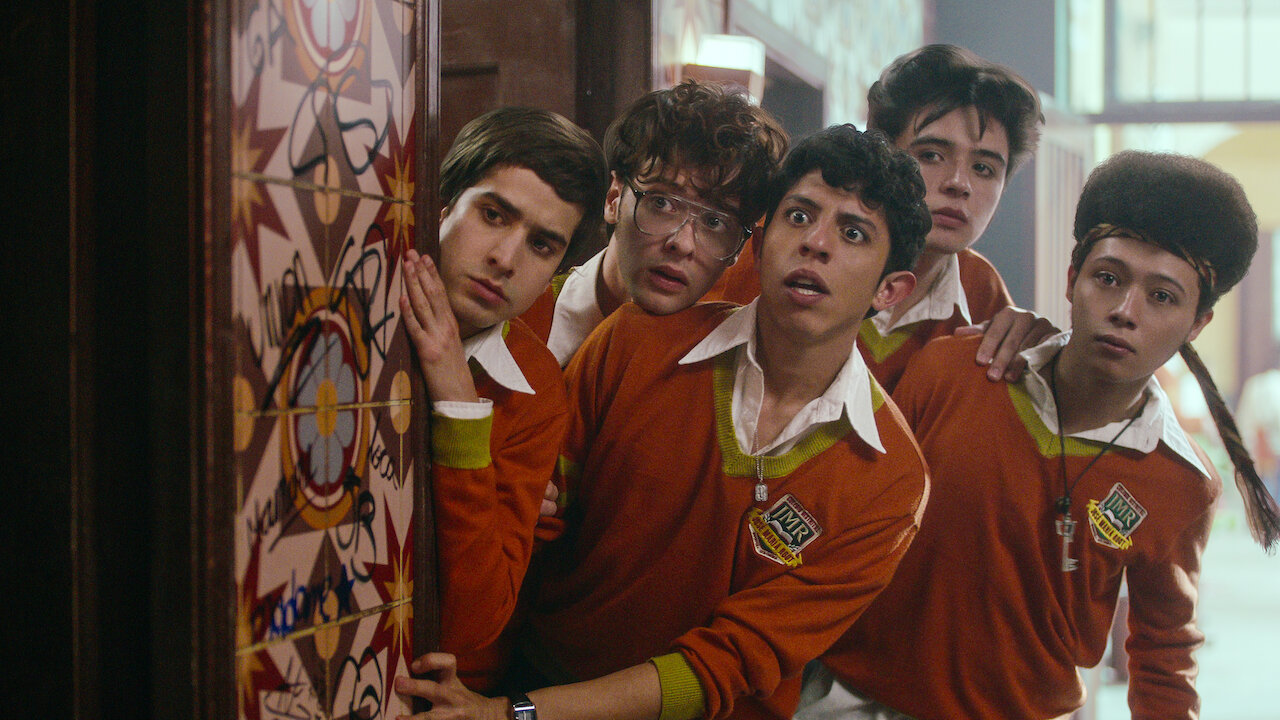Created by Dago García, Netflix’s ‘Eva Lasting’ (originally titled ‘La Primera Vez’) is a coming-of-age comedy series set in 1976 Bogotá, Columbia. It follows a typical all-boys school where teens are busy looking at pornographic magazines and finding ways to torment their teachers. Things take a drastic turn in their lives when a mysterious girl, Eva Samper (Francisca Estevez Navas), arrives at the all-boys school. While most boys are taken aback simply by her presence, her overtly rebellious nature and knowledge about literature and her feminist ideologies are snared upon.
Amidst everything, the “awkward nerd,” Camilo Granados (Emmanuel Restrepo), takes a serious liking to Eva. He attempts to learn new dance moves, knitting, and read new literature to get close to her and eventually falls in love. However, though the series might hint at the love story between the awkward Camilo and bold Eva, it is not quite what it looks like. The eccentric and bold characters in ‘Eva Lasting’ are so well-written that one can’t help but wonder if they are based on real people and if true events inspire their actions. If you’ve found yourself thinking along the same lines, here are all the details you need.
Eva Lasting: A Fabricated 70s High School Tale
No, ‘Eva Lasting’ is not based on a true story. While the series is simply the brainchild of the writer and creator Dago García, who has attempted to paint a real picture of the high school setting back in the 1970s and how gender-conditioned normative behavior affected the psychology of students in high school settings. If we put themes of speech and expression in the current years parallel to the ones witnessed in the 70s, the distinct ideologies would surprise us. The 1960s and 1970s saw the rise of the second-wave feminism movement, which focused on issues of equality and discrimination.

While female students were not allowed to dress in a certain way where their attire resembled that of a man’s. A girl expressing herself through gender equality terms would be ridiculed, if not expelled, by the school itself. The era also saw the rise of co-educational institutes, which has been beautifully explored by the creator, where he shows the problems faced by a young feminist in a world of boys. Social issues such as feminism or LGBTQ were not openly talked about and treated as abnormal or criminal activity.
Though the series is fictional, the ideas and themes in it are gravely rooted in reality. The outright engagement of high school girls in their fight for equality and their voicing of feminist agendas were seen in almost every school in the 60s and 70s. Protests in efforts to change the narrative and school uniforms were echoed in the halls of schools. One incident can be cited in this context for better understanding. In the 70s, more than 100 students at Fairmont West High School in Ohio successfully changed the administration’s policy against the wearing of trousers by women.

In her article ‘Girls Are Equal Too: Education, Body Politics, and the Making of Teenage Feminism,’ Kera Lovell recalled an incident where eight Massachusetts students at Somerville High School were arrested in 1970 for wearing trousers to school as an act of protest. In fact, high school girls were also barred from taking metalwork classes in schools and were obliged to partake in only domestic subjects such as knitting and home economics.
Therefore, when we see Camilo and other male students engaging in knitting, Eva acts as a true mediator to break gender norms and stereotypes. Her entering all male washrooms is also very significant to highlight the entry of a woman in a world exclusive to males. The themes of LGBTQ have also been beautifully presented, where viewers can see characters breaking the norms of the common high school love story narrative, where Eva’s secret is revealed, and viewers understand why she kept refusing to be with Camilo.
Despite Camilo being the perfect Otis we all love from the series ‘Sex Education,’ we find parallels in Maeve and Eva as feminists breaking gender stereotypes. However, in this case, Eva’s sexuality is the climax of the show. Hence, although ‘Eva Lasting’ is a fictional TV show, it layers several political, social, and gender themes that reflect the face of society in the 70s and present era.
Read More: Best Teen Shows on Netflix


You must be logged in to post a comment.